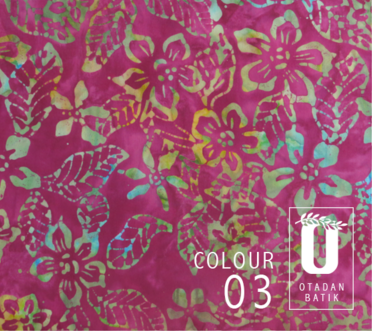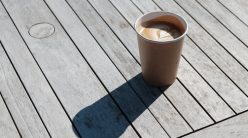Mayhem before markup
Making new jeans look old is an art.
LOS ANGELES TIMES
LONG BEACH, Calif. — David Johnson hunched over the monster washing machine, dousing his canvas of denim with bleach.
He was interrupted by a voice booming over the PA system: “David, please come to the lobby.”
Johnson did a quick rinse of the jeans and tossed them aside. He figured that he would meet a visitor at the front of International Garment Finishing and be back in 15 minutes. Then he would finish transforming the new jeans into a pair that seemed worn by a lifetime in a mine shaft
Instead, one thing led to another, and he was gone three hours. By the time he got back to the jeans, they were finished, all right. Splotched white here, spotted dark blue there, speckled randomly like mildew. They looked as if they’d been dragged behind a race car and drizzled with motor oil.
They were trashed.
Purposely like that
Many high-end fashion designers might have tossed them. But Johnson is an artist of destruction. His palette is indigo, his tools bleach, pumice stone and wood grinders.
He is among the laundry workers who feed the $11 billion jeans market, in which every season demands a new tweak on a pant that never goes out of style.
Los Angeles is the design hub for that market. In recent years the taste has been for worn-out-looking jeans. And so a back-pocket industry was born for faking authenticity — a job for guys like Johnson and his colleagues at the Long Beach factory.
Their task is to re-create the distressed, abstract-expressionist looks that designers want on their jeans.
Johnson is so serious about his craft that he once wore the same pair of jeans every day without washing them for more than a year, just to see what they would look like.
After getting over his shock at the condition of the jeans he left folded and soaked for too long, Johnson began to see possibilities.
The “three-hour muck-up jeans,” a working title altered slightly for print, got some sanding, some tearing, some stitching. The brand managers at the upscale Taverniti label were thrilled. They added the jeans to their Janis line, and renamed them Dark Acid Wash.
But would anyone pay $200 for a mistake?
Driving the sales
Garment finishing is a niche of a niche of the jeans trade. But like couture in the larger apparel industry, the so-called premium denim market of jeans costing more than $150 drives overall sales. And it has grown rapidly in the last five years, fueled largely by teens and twentysomethings willing to pay up to $400 for that perfect pair of jeans that fits snug and looks custom-made.
The idea is basically to create controlled chaos. Designers bring in wildly distressed jean prototypes — and it’s the job of the workers in the factory to perfectly duplicate that look hundreds or thousands of times for sale around the world. Because each designer’s vision is meant to be different from competitors’, the factory workers must take great care to get the tiniest details right.
The process of ruining the jeans into high fashion masterpieces begins with a resin treatment that helps the denim hold its shape and stand up to the abuse that awaits. Then comes creasing, followed by repeated trips through a 300-degree oven. The jeans are then rolled to “the grinding room,” where two dozen workers attack hems, waist, collars and other edges with woodworking tools.
Drills would cause a clean puncture, which is not how jeans would tear, so just the right frayed and thready look requires grinding, said Victor Ramirez, one of the plant supervisors.
Janis and some other styles next go to a shed outside for a secret process that Johnson said gives the company a competitive edge.
It takes skill
Near the secret trick shed is the “sanding room,” where seamstress dummies dangle like sides of beef. Hispanic workers croon to ranchera music as they painstakingly sand the crotches of jeans. It is a practiced skill to scrape off just the right amount of fabric to resemble sun rays shooting off the fly. In the trade these are called “whiskers” or the “mustache.”
Next may come the washes for the finish. Pre-wash, stonewash, acid wash, distress — these are the modern-day eras in jean finishes. Sometimes the pumice stones are used, other times volcanic rock, depending on the brand. Three pounds of stones are required for each garment, Johnson said. The plant goes through 40,000 pounds of stones weekly.
Johnson’s design accident looks darker than most of the jeans the plant produces. The wide splashes of navy blue on the jeans give them an almost oily, cloudy appearance.
At first “I thought, ‘Oh my God, I’m such a klutz, I totally messed these up,'” Johnson said.
The jeans turned out to be a hit with both Taverniti’s brand managers and designers.





